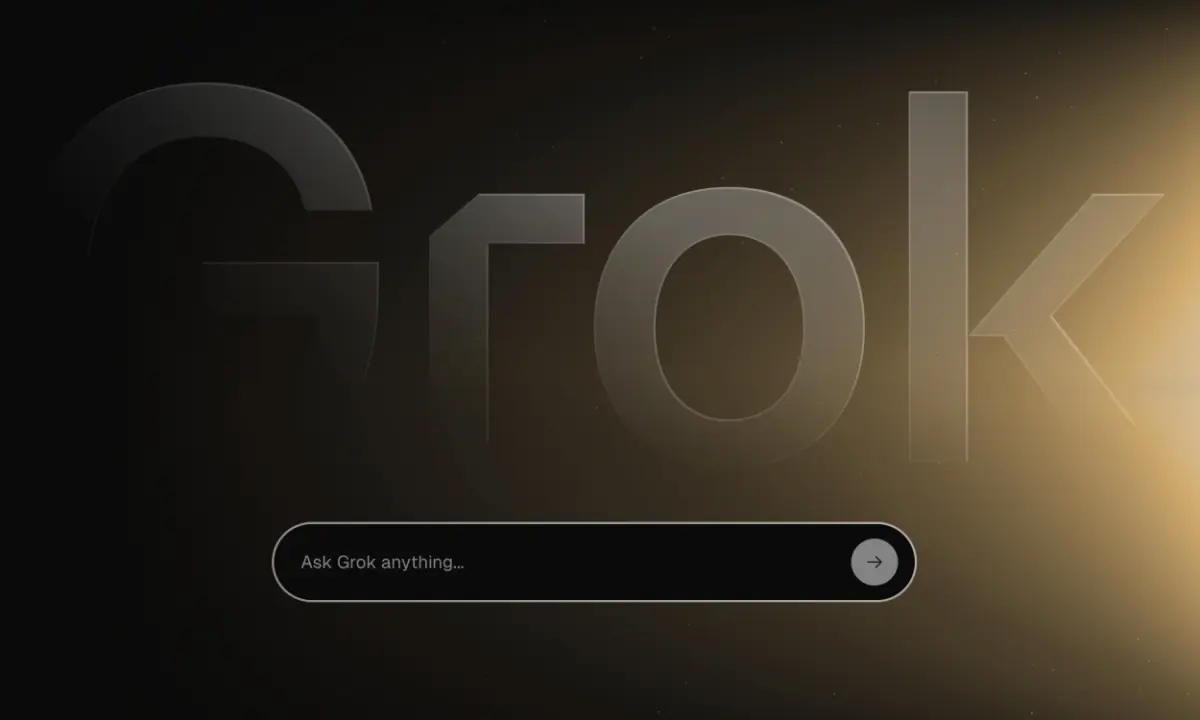News, Ethics & Drama
Surveys Say Students Are Hooked on AI, But Learning’s Taking a Hit
Two years post-ChatGPT’s debut, the education game’s getting a serious AI overhaul. This recent video takes a look, and the stats are wild: a KPMG study from October shows 60% of Canadian students are tapping generative AI for schoolwork – research, essays, even tests. The catch? Two-thirds of the 420+ surveyed admit they’re barely retaining anything. This isn’t just a tool; it’s a crutch, and it’s sparking big questions.
Here’s the twist: students know they’re short-circuiting their brains. Sure, cheating’s old news. But AI is becoming just the slick, free, instant upgrade, and kids treat it like gospel over their profs. Educators are playing catch-up, leaning on shaky AI detectors and gut calls that don’t always stick.
Check out the video and let us know what you think!
News, Ethics & Drama
Grok Gets a Memory: xAI Chatbot Remembers Past Conversations

Get ready for more personalized chats with Grok! Elon Musk’s xAI is rolling out a new “Memory” feature for its AI chatbot, aiming to make interactions smoother and more context-aware. This move brings Grok’s capabilities closer to competitors like OpenAI’s ChatGPT, which introduced a similar memory function earlier.
The core idea behind Grok Memory is simple: the chatbot will now remember details and preferences from your previous conversations. This allows Grok to build upon past interactions, avoiding the need for users to constantly repeat information or context. For example, if you’ve previously mentioned your coding preferences or dietary restrictions, Grok should recall these details in future chats.
How Grok Memory Works
According to xAI, the feature is designed to improve the helpfulness and flow of conversations over time. As you chat more with Grok, its memory will evolve, tailoring responses more specifically to your needs and history. This could lead to more efficient problem-solving, better recommendations, and a generally less repetitive user experience.
Importantly, xAI emphasizes user control over this feature. Users will reportedly be able to view what Grok remembers, delete specific memories, or turn the entire Memory feature off if they prefer not to use it. This addresses potential privacy concerns often associated with AI systems retaining user data.
Catching Up in the AI Race
The introduction of Memory positions Grok more competitively against other leading AI chatbots. Remembering context is becoming a standard expectation for sophisticated AI assistants, and this update helps xAI keep pace. The feature is reportedly rolling out gradually to Grok users.
Our Take
So Grok is finally getting a memory, letting it remember stuff from past chats. Makes sense – it’s kinda table stakes now if you want to compete with ChatGPT. No one likes repeating themselves to an AI, so this should make using Grok feel less like starting from scratch every single time.
Giving users control to see, delete, or turn off the memory is definitely the right call, hitting those privacy concerns head-on. Still, it shows how crucial personalization (and the data that fuels it) is becoming in the AI chatbot game. It’s all about making these tools feel less like generic bots and more like assistants that actually know you.
This story was originally featured on Beebom.
News, Ethics & Drama
OpenAI Ups the Ante with New ‘Reasoning’ Models: Meet o1 and GPT-4.5 Turbo

OpenAI is pushing the boundaries again, rolling out a fresh batch of AI models designed to tackle more complex tasks with deeper reasoning capabilities. Headlining the release are the new ‘o1’ models – o1-preview and o1-mini – alongside an updated GPT-4.5-Turbo, signaling a continued focus on enhancing how AI processes information and interacts with the world.
The key innovation with the o1 series appears to be a more deliberate, step-by-step “thinking” process. Unlike standard large language models (LLMs) that often generate the first plausible answer, these models are built to reason through problems more methodically before providing a response. This approach aims to improve accuracy and reliability, especially for complex queries in areas like science, math, and coding.
Introducing the New Lineup:
- o1-preview: Positioned as the top-tier reasoning model, designed for the most demanding tasks requiring deep analysis and multi-step thought.
- o1-mini: A smaller, faster, and more cost-effective version, making advanced reasoning capabilities more accessible for applications where speed or budget is a key factor.
- GPT-4.5-Turbo: An updated version of their flagship GPT-4 model, likely incorporating performance improvements, knowledge updates, and potentially enhanced efficiency.
Beyond Text: Images and Tools
These new models aren’t just about text-based reasoning. OpenAI is also highlighting their multimodal capabilities, specifically the ability to analyze images and understand visual information. Furthermore, enhanced “tool use” or “function calling” allows these models to more effectively leverage external tools or APIs to perform actions or retrieve specific information, making them more versatile assistants.
These models are being made available through OpenAI’s API for developers and are also being integrated into ChatGPT, likely replacing older underlying models for users. OpenAI also mentioned updates to pricing, suggesting potentially lower costs for some of these advanced capabilities, further fueling competition in the AI space.
Our Take
So OpenAI is dropping models that actually try to “think” step-by-step? That feels like a pretty significant shift. Instead of just spitting out fancy text, the ‘o1’ series sounds like it’s built to actually *reason* through problems, which could be huge for tackling complex stuff accurately.
Making a cheaper ‘mini’ version is also smart – it gets these more powerful reasoning tools into more hands faster. It keeps the heat on competitors and pushes the whole field towards AI that doesn’t just talk, but hopefully understands and solves problems more reliably. Definitely watching this space closely!
This story was originally featured on Business Insider.
News, Ethics & Drama
NaNoWriMo Shuts Down Amid Financial Woes and Community Controversies

The National Novel Writing Month (NaNoWriMo) organization, a beloved online writing community known for its annual November challenge, has announced it is shutting down after 25 years. The nonprofit cited long-term financial difficulties as the primary reason for its closure.
Founded in 1999, NaNoWriMo grew from a simple mailing list into a global phenomenon, encouraging hundreds of thousands of aspiring authors to pen a novel draft in just 30 days. However, recent years saw the organization facing significant headwinds beyond just its finances.
Controversy flared up last year, significantly impacting community support. One major point of contention was NaNoWriMo’s stance seemingly in favor of using artificial intelligence in creative writing. This position led to high-profile resignations from its board, including bestselling authors Maureen Johnson and Daniel José Older. Their departure mirrored widespread anxiety among writers about AI models being trained on their work without consent, potentially jeopardizing their careers.
Simultaneously, the nonprofit faced criticism over inconsistent content moderation on its forums, particularly concerning the safety of younger participants. Community members argued that these moderation issues created an unsafe environment for teens.
While a NaNoWriMo spokesperson, identified as Kilby in a YouTube statement, emphasized that the recent controversies weren’t the direct cause of the shutdown, they acknowledged the impact. The statement suggested the closure was more fundamentally tied to the financial unsustainability often faced by nonprofits, stating, “Too many members of a very large, very engaged community let themselves believe the service to be provided was free.”
The demise of NaNoWriMo marks the end of an era for many writers and highlights the complex challenges facing online communities, especially when navigating issues like AI ethics, content moderation, and nonprofit funding.
Our Take
So NaNoWriMo is closing shop. While they point to money woes, you can’t ignore how their nod towards AI in writing blew up last year. It definitely cost them support when authors were already stressed about AI taking over. It makes you wonder, though – maybe they should have doubled down?
Instead of backing off, fully embracing AI’s role could have been a bold move, trying to lead the conversation. But hey, combining that kind of community pushback with shaky finances and moderation drama? That’s a seriously tough spot for any non-profit to navigate.
This story was originally featured on TechCrunch.
-

 Prompted Pixels2 weeks ago
Prompted Pixels2 weeks agoCute Severance Action Figures
-

 News, Ethics & Drama2 weeks ago
News, Ethics & Drama2 weeks agoSo, Why’s OpenAI Suddenly Sharing? It’s Not Just About the Competition
-

 News, Ethics & Drama2 weeks ago
News, Ethics & Drama2 weeks agoGemini 2.5 Pro Goes Free: Google’s AI Game-Changer Unleashed
-

 News, Ethics & Drama2 weeks ago
News, Ethics & Drama2 weeks agoElon Musk’s xAI Acquires X: The Future of AI and Social Media Collide
-

 News, Ethics & Drama2 months ago
News, Ethics & Drama2 months agoOpenAI Unveils GPT-4.5: A Focus on Conversational Nuance
-

 Writing2 weeks ago
Writing2 weeks agoSudowrite Review (2025): Can It Match Human Writing?
-

 Video Vibes1 week ago
Video Vibes1 week agoSurreal Cityscape – SORA Video by Jesse Koivukoski
-

 News, Ethics & Drama1 week ago
News, Ethics & Drama1 week agoNaNoWriMo Shuts Down Amid Financial Woes and Community Controversies






















